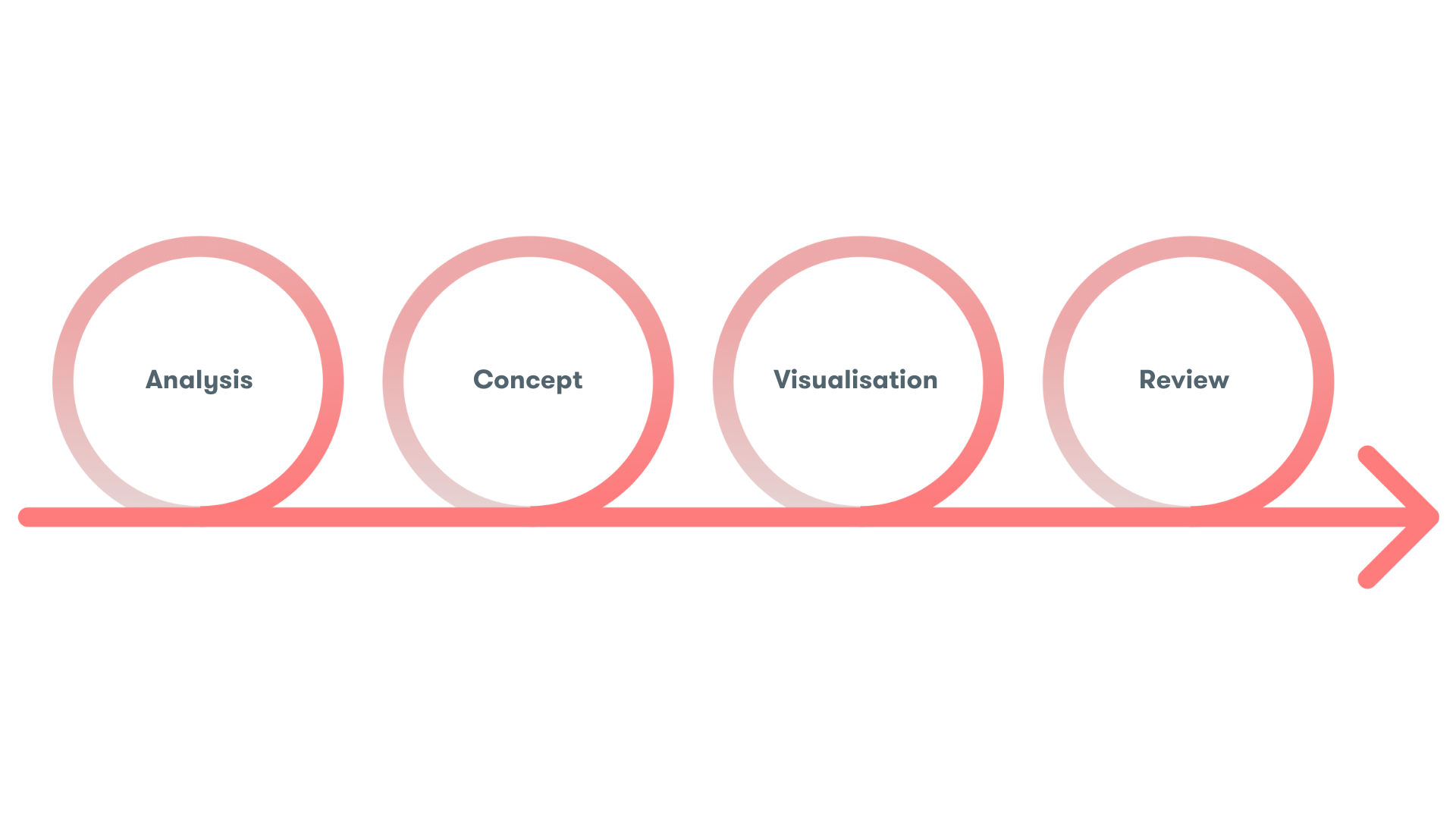Have you ever wondered why e-commerce platforms like Amazon, Galaxus and Zalando are so successful? One thing is for sure: all three companies offer their users an outstanding user experience. The so-called user experience design (ux design), which is about designing the user experience, has a significant influence on how customers experience and evaluate digital products. It is the decisive factor that determines success or failure in e-commerce.
To ensure that your digital products are a complete success, in this blog post we explain in detail how to approach UX design and which methods are used when developing or refining digital products. We will also show you why it is worthwhile for SMEs to work with an UX design agency.
Definition of UX design
UX design is the process that design teams use when developing service or product interactions to provide users with a relevant and positive experience. As the name suggests, it is about designing the way people interact with products. UX design encompasses the entire process of product creation and integration, including aspects such as user interface, usability and accessibility.
Why is UX design important?
UX design plays a pivotal role in e-commerce, as it determines how users interact with and perceive digital products. In an increasingly competitive world, good ux design is becoming a key differentiator. It influences not only customer satisfaction, but also customer loyalty, which is essential in e-commerce.
The user is always at the centre of UX design. Good UX design makes it possible to make complex technologies accessible to the user, thus overcoming barriers. It promotes a positive shopping experience, which in turn increases customer satisfaction and loyalty.
UX design also contributes to efficiency. Clear and intuitive user interfaces enable users to achieve their goals faster and more effectively. This is important not only for end users, but also for businesses, which can reduce costs and increase sales through improved usability.
In an ever-changing digital landscape, UX design is also key to the ability to innovate. By continuously analysing user behaviour and needs, designers can make adjustments to e-commerce platforms and implement new features to keep up with changing expectations.
UX design process and methods
The UX design process in e-commerce is characterised by a systematic approach that includes various methods and steps:

Analysis
The UX design process often begins with a comprehensive analysis in which the needs and behaviour of the target group are examined. This analysis can include interviews, surveys, data review with Hotjar/Google Analytics and observations to gain a deep understanding of the users, the domain, the product, its application context and all related frameworks.
Concept
Building on the results of the analysis, the design phase follows. The conceptual design utilises all the information gathered from the analysis to precisely define the complex needs and requirements. The previously thoroughly analysed usage context forms the basis for this. For example, personas representing different user profiles are created during the conceptualisation phase. With the help of these personas, it can then be ensured that the user is always at the centre of decisions. In addition, an information architecture is created that enables user-friendly navigation. Furthermore, scenarios are designed in the conception phase to visualise interactions in realistic situations. Finally, customer journey maps are included in order to understand the user journey holistically and identify potential for improvement.
Visualisation
Building on the results of the analysis and concept phase, concrete concepts are developed and visualised in the next phase. The first step is usually the creation of wireframes. A wireframe is a model that schematically represents the basic structure and organisation of the user interface of the website or application. Did you know that when creating wireframes, UX designers initially only focus on the function and navigation of the product and leave out design elements at the beginning? This approach makes it possible to test the user interface for user requirements at an early stage and adapt it without a great deal of effort.
Review
After implementation comes the review, in which the designed product or application is verified through tests and user feedback. Only testing with real users makes the development process truly user-centred. The entire ux design process should be iterative. It is therefore advisable to evaluate the prototypes with real users in various development phases. The insights gained can then flow directly into the further development of the prototype and ultimately the final product. Once the product has been launched, the UX design process is not over. The product is continuously optimised through trend analyses, research and user feedback.
What do UX designers do now?
UX designers play a central role in e-commerce as they are responsible for the entire design process mentioned above. In other words, they are responsible for the practical implementation, translating user research findings into concrete design solutions. This includes the creation of information architectures, personas, use cases, customer journeys, user flow diagrams and visual designs which, as you have learnt, should not only be aesthetically pleasing but also functional and user-friendly. Working closely with other team members such as developers and product managers, UX designers ensure that the end product meets the defined goals.
What are UX design agencies?
UX design agencies are specialised service providers that help e-commerce companies develop optimal user experiences for their digital products. Their expertise enables them to offer a comprehensive approach, from research and design to implementation. SMEs in particular benefit from the versatility and in-depth expertise of such agencies, especially if they do not have in-house UX resources.
Working with a UX design agency also offers the advantage of being able to draw on a well-established team of digital designers, researchers and specialists who specialise in different industries and projects. This allows for efficient and targeted implementation, saving time and resources.
In addition, UX design agencies often bring a fresh external perspective that can help break down entrenched thinking patterns. Thanks to their broad experience, they can quickly identify trends and best practices and integrate them into project work.
Conclusion and summary
Understanding user experience design (UX design) is critical to the success of any e-commerce platform. Beyond pure aesthetics, UX design has a significant impact on how users experience and ultimately evaluate digital products. As it turns out, the UX design process, which is characterised by analysis, conception, visualisation and testing, enables user-centric development. UX designers play a crucial role in this process. In addition, working with a UX design agency offers SMEs a holistic approach, from research to implementation. This allows for efficient implementation, taking into account trends and best practices.
Would you also like to offer your customers an e-commerce platform that inspires them? No problem, Arcmedia will be happy to help you. Contact us to find out more and start your next digital project with us.







